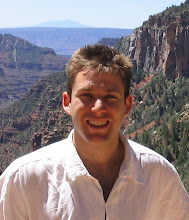 About 800 years ago, a group of traveling settlers came across an ideal new home. The group was the Maori, the place was New Zealand, and the reason it was such a lucky find was the presence of moa. Moa were large, flightless, and defenseless birds—up to 3.5 meters tall and 250 kilograms—that offered the Maori an abundance of tasty, nutrient-rich, and easy food.[1]
About 800 years ago, a group of traveling settlers came across an ideal new home. The group was the Maori, the place was New Zealand, and the reason it was such a lucky find was the presence of moa. Moa were large, flightless, and defenseless birds—up to 3.5 meters tall and 250 kilograms—that offered the Maori an abundance of tasty, nutrient-rich, and easy food.[1]The Maori responded to their resource-rich world in a predictable manner. They began eating moa. Lots and lots of moa. Archeologists have found huge Maori camps with scores of ovens and the remains of tens of thousands of moa carcasses. It’s not hard to imagine why the Maori ate so many moa. It was simple—moa had almost no defenses, and we find no evidence that the Maori had hunting weapons more complex than spears and clubs. Many of the skeletal remains of moa show that their necks were wrung. Without much exaggeration, it seems one could walk up to a moa, club it, and drag it back to the campground.
The ease with which moa could be hunted led to incredibly inefficient use of the birds. The Maori preferred the meat from the haunches and often abandoned the rest. Moreover, archeologists have found unopened ovens with entire moa inside. With such a wide availability of moa, resource-conservation must have seemed a low priority.
The Maori had a good thing going on, and milked at as long as they could. After arriving in New Zealand, they essentially had a three or four hundred year moa barbeque. And then the moa began to run out. We don’t know how the Maori tried to respond to this decline—Did they limit hunting? Did they search for other types of food? Did they consider leaving New Zealand for a new land?—but we do know the results. They continued to eat moa until there were no more left.
Transitioning from a moa-rich environment to a moa-poor environment dramatically changed the culture of the Maori. Whereas the Maori came from the relatively peaceful Polynesian culture, by the time of the decline of the moa, the society took a decidedly militaristic turn. The Maori started to build large forts beginning in the 15th century, and by 1642, when the first European explorer arrived, cannibalism was a common practice. The Dutchman Abel Janzoon Tasman sent a boat of men to meet a canoe of Maori, and the Maori proceeded to slaughter the men in the boat. By the time Captain Cook arrived in 1768, he was greeted by Maori chanting: “Haere mai ki uta kia patua” or “Come ashore and be clubbed.” Violence between Maori groups was endemic—Cook noted that the first thing any group asked for in trade was help in destroying their neighbors.
We have much to learn from the Maori and their relationship to resources. If we substitute fossil fuels for moa and present-day Americans for 17th century Maori, some disturbing parallels arise. Americans have feasted on fossil fuels for nearly two centuries, transforming coal, oil, and natural gas into heat, light, better food through fertilizer, extended life spans, and dramatic improvements in overall quality of life. We have also used the over-abundance of fossil fuels very inefficiently. Just like the early Maori, we have had a great run thanks to a resource-rich world.
Unfortunately, our world will not remain fossil-fuel rich forever (whether this is a matter of decades or centuries is up for debate, but the ultimate depletion of fossil fuels is inevitable if current patterns continue). Here the lessons of the Maori grow darker. They suggest two important questions. First, can we make social changes that preserve a valuable but dwindling natural resource? Second, will we have the grace to enter a resource-poor environment without resorting to factionalism, violence, and cannibalism?
For the Maori, the answer to these questions was a resounding no. A quick look at our fossil fuel consumption practices indicates that we are not doing much better in the twenty-first century. Those of us interested in our planet and society would be wise to learn more about the fate of the moa and how we can make different choices for the future.
[1] The evidence for this piece comes from the excellent book by Tim Flannery on the historical relationships between Australasian peoples and their environment: Tim F. Flannery, The Future Eaters: An Ecological History of the Australasian Lands and People, (New York: Grove Press, 1994).
